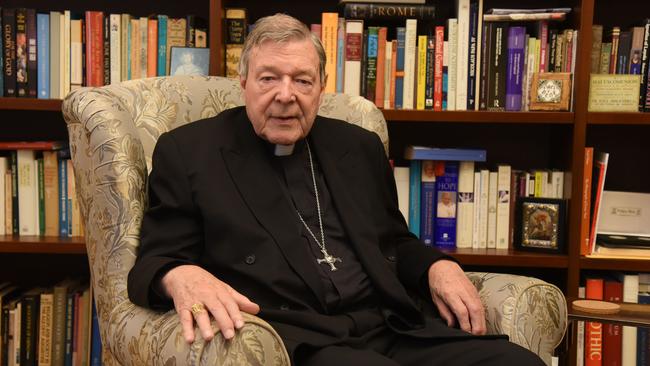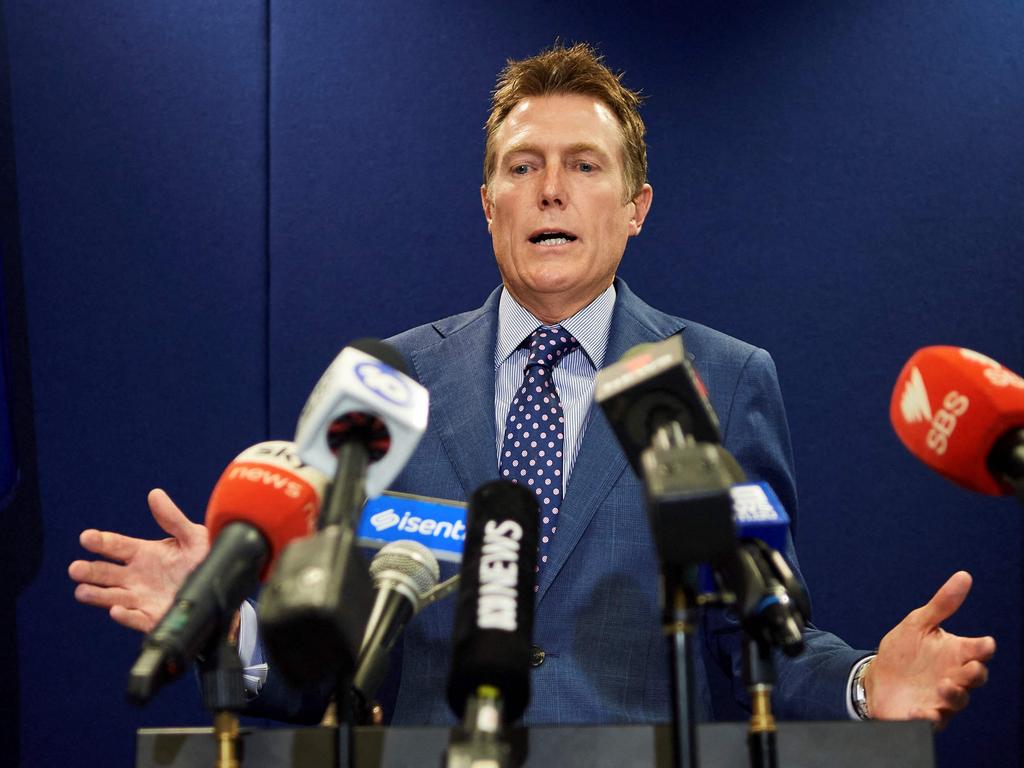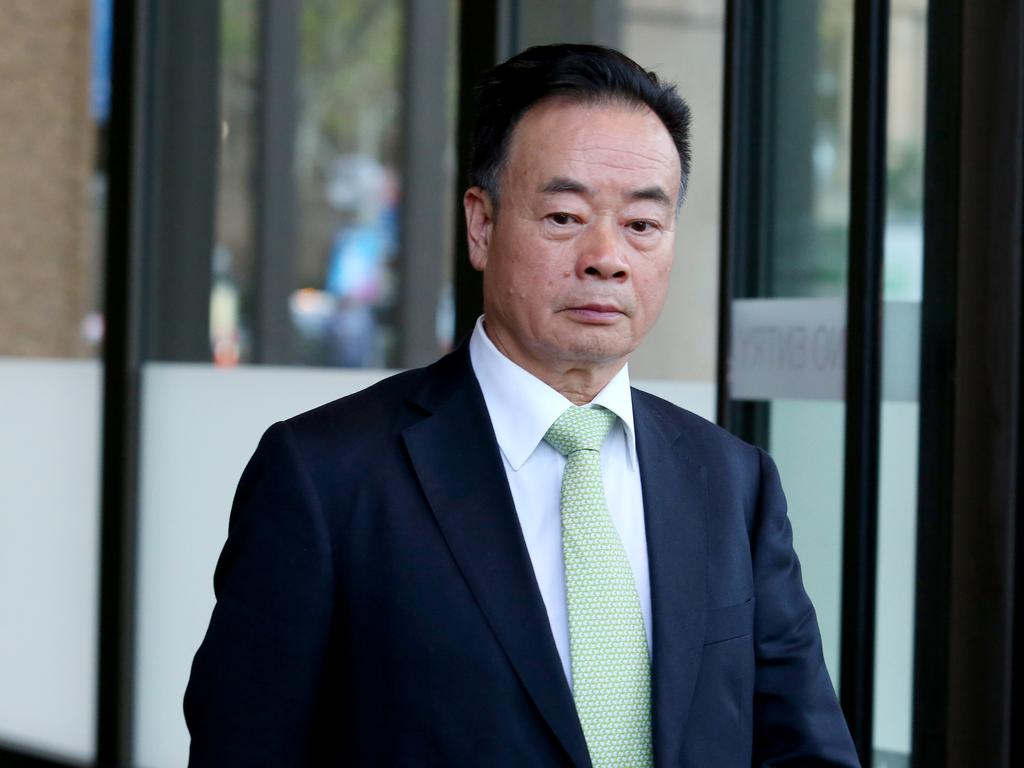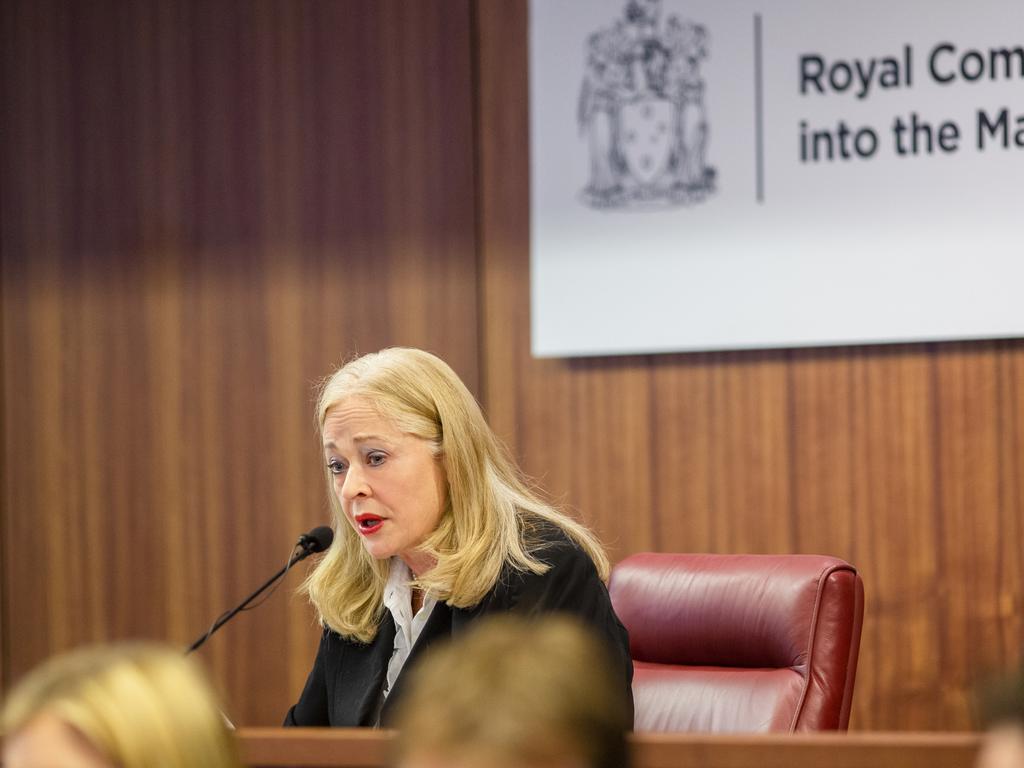
The Post probably helped restore some lost credibility after special counsel John Durham on November 4 charged Igor Danchenko with lying to the FBI over the now notorious Christopher Steele dossier. The Steele material was used by the FBI, the Democrats and the media to build the Russian collusion case against Trump’s 2016 presidential election campaign.
This column had outed links between the dossier and the Democrats, but ABC’s Four Corners went on to run a three-part special on the subject in June 2018, grandly called The Story of the Century.
Four Corners has never corrected the record. Nor has it admitted one of its main sources, former Barack Obama security chief James Clapper, had already told a secret congressional hearing he had seen no credible evidence against Trump even before he told Four Corners reporter Sarah Ferguson the opposite.
The Pell story holds similar lessons for the ABC and Guardian Australia, where journalists Louise Milligan (ABC) and David Marr (Guardian) led the anti-Pell pile-on. Media Watch host Paul Barry cautioned last Monday, correctly, that journalists were being used by the police to name potential suspects in the William Tyrrell investigation, many of whom had later been ruled out.
It’s a point Barry has not made about the ABC’s coverage of allegations against Pell and Trump. Yet in the US, journalists led by independent reporters Matt Taibbi and Glenn Greenwald have made exactly that criticism about fake intelligence fed to Democrats-leaning journalists.
Gerard Henderson’s new book – Cardinal Pell, the Media Pile-on & Collective Guilt – is a detailed but rollicking read that does question why some journalists failed to test the claims of their sources before publishing them. Nor does it miss the judges and reporters who could not see what should have been clear to anyone who carefully examined charges that Pell molested two altar boys in the sacristy at St Patrick’s Cathedral after Sunday mass in November 1996.
The book also focuses on flaws in the findings of the Royal Commission Into Institutional Responses to Child Sexual Abuse. Henderson implies, correctly in my view, that the commission fed into an anti-Catholic frenzy.
The commission claimed 62 per cent of sexual assaults in religious schools happened at Catholic institutions but could not say if this was an over-representation. At the time being examined, the Catholic system probably educated up to 80 per cent of all children at religious schools. The ABC misreported the claim several times, suggesting 62 per cent of all institutional abuse – rather than abuse in religious schools – was in the Catholic system.
Henderson criticises commission chair Justice Peter McClellan, once a sceptic of royal commissions that might “cause considerable harm to persons unfairly trapped in a blaze of sensationalist publicity”. Justice McClellan had also written on “the fallibility of memory”.
Henderson asks why the commission, police and many journalists refer to complainants as “victims” or “survivors” when that is for courts to decide. Have changes in policing in Victoria created an assumption of guilt in child abuse cases?
This is an important consideration. Some of the allegations against Pell in Milligan’s 2017 book Cardinal concern events many decades old, when Pell was a young man. Identity and memory must have been issues. Yet Milligan reports alleged contemporaneous conversations in direct speech.
Some of Milligan’s reports concern alleged offending in public places, such as in a swimming pool in broad daylight. In the St Patrick’s case – and in most of the other matters dropped at committal – there was no evidence of grooming.
One charge Pell was tried on concerned an alleged assault in the cathedral proper, in front of potentially hundreds of witnesses, all of whom saw nothing.
Another of Henderson’s media targets, journalist Suzanne Smith, in her excellent 2020 book The Altar Boys, goes into great detail about the grooming of the boys raped by priests in the Maitland and Newcastle Diocese and the grooming of their Irish Catholic parents.
The Age’s John Silvester, no Pell backer, praised the High Court’s unanimous 7-0 rejection of Pell’s conviction on April 7 last year. In a piece after Pell’s conviction in 2019, he wrote: “Pell has become a lightning rod in the worldwide storm of anger at a systemic cover-up of priestly abuses. But that does not make him a child molester. If Pell did molest those two teenagers … it does not fit the usual pattern. Those in power identify vulnerable potential victims, groom them and isolate them, committing offences in private then pressuring the abused into silence.”
Henderson quotes the judge in the first and second trials, Peter Kidd, on the mob mentality that marred the Pell case. To other victims of abuse, he said: “This sentence is not and cannot be a vindication of your trauma. Cardinal Pell has not been convicted of any wrongs committed against you.”
Yet underpinning much of the book is a view that, for many, Pell was indeed effectively on trial for the sins of his Church. How else to explain why two trials and an appeal could ignore obvious flaws in the prosecution case and reject the credible testimony of the opportunity witnesses who said the events could not possibly have happened because Pell was elsewhere at the time?
At several points in his book, Henderson returns to the missing six minutes – the prosecution was never able to explain how Pell managed to find that amount of time to commit the alleged assaults. Nor did the media or police give sufficient weight to the account of the mother of the deceased second chorister, who had told her he was never abused.
Pell’s critics believed the then newly installed Archbishop of Melbourne, at only his first or second mass in his cathedral, raped two boys without even closing the door to the sacristy. To reach this conclusion they relied on the uncorroborated testimony of a single alleged victim and ignored the 20 witnesses who said Pell was, at the time, at the front of the cathedral, as usual after Mass.
Only Justice Mark Weinberg, in the dissenting judgment in the Victorian Court of Appeal, demolished the notion of witness credibility relied on at Pell’s two trials and by the Appeals Court majority.
Henderson also examines the role of Victoria Police, particularly retired chief commissioner Graham Ashton. The author criticises VicPol’s decision to set up Operation Tethering before the police had received any complaints about Pell. Witness A in the St Patrick’s case made his complaint a year later in June 2015 and Tethering then advertised for choristers at St Patrick’s to come forward if they had witnessed any abuse. None did.
In 2012, Ashton had been appointed deputy commissioner of specialist operations and “led a victim-focused approach resulting in changes to the handling of child sexual abuse cases”. His many mistakes in that role are revealed in painful detail.
By far Henderson’s harshest criticism is for the journalists he calls “Pell antagonists”.
Many did too little to check details of specific allegations. They used anonymous sources to make specific criminal allegations. They used direct quotes to relate alleged conversations that were decades old. Many showed little practical understanding of the powers, roles and geographical boundaries that apply to church officeholders. Almost all misjudged the legal process from the time of Pell’s conviction.
Many of the worst offenders named are at the ABC. But just like an old episode of Insiders, Henderson reserves a special place for the Guardian Australia’s David Marr, who got much of his legal analysis wrong. The book criticises ABC programs for using Marr and Milligan as commentators on the case, given both had been hostile to Pell for years.
Trust in journalism is fragile. Rather than following a media pile-on to the plaudits of fellow followers on Twitter, reporters who believe everything their sources tell them need to stop occasionally and ask themselves: is this story even true?







The release last Wednesday of a book about the media pursuit of Cardinal George Pell, and an earlier decision by The Washington Post to re-edit slabs of its own reporting about Donald Trump and Russia, highlight the need for journalists to reflect on how they are being used by their own sources.